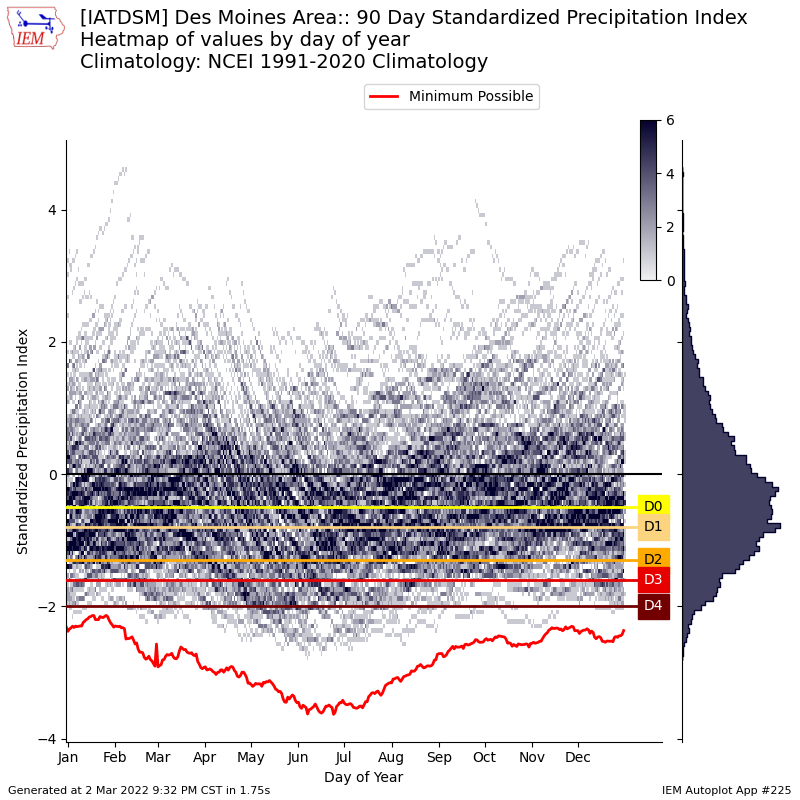IEM Daily Feature
Thursday, 03 March 2022
Thursday, 03 March 2022
SPI Climatology
Posted: 03 Mar 2022 05:32 AM
Today's Daily Feature chart is a bit of a deep dive into the Standardized Precipitation Index (SPI).
The SPI is computed over some duration of time by taking the accumulated precipitation minus the
climatological average accumulation for that period and then dividing that value by the standard
deviation of historical accumulations for previous years for that same period. This normalization
attempts to produce a comparable index value that can be equally applied over various regions and
at various times of year. No metric is perfect and this index has some caveats to be aware of as
illustrated by the featured chart. The chart presents the climatology of 90 day SPI for Des Moines.
The main panel is heatmap of SPI frequency by day of the year. The SPI is often applied to drought
classification levels with the D0 to D4 threshold levels denoted. The red line at the bottom represents
the minimum possible value for the day of the year given its climatology accumulation and standard
deviation. Since precipitation is bounded by 0 at the low end, the negative departure can only be as
negative as the climatology allows. For example, if the 90 day precipitation average is two inches and
the location received no rain and the standard deviation is an inch for that date, the SPI can go no
lower than a -2. The positive departures are not bounded as biblical flooding can occur with SPIs
going to the moon. This chart uses 1991-2020 climatology to provide the daily averages, which is
wetter than periods prior. The effect is a large negative SPI bias as shown by the right hand side
frequency count with a majority of the population below zero. You can generate this plot using period
of record climatologies, but the slight SPI negative bias remains due to the skewed distribution of
precipitation totals. A final and cool plot artifact is the downward wave from April through June. This
is complex to explain, but has to do with daily climatology and variability increasing with each day for
that time of year, which both act to push SPI lower.
Voting:
Good = 11
Bad = 1
Abstain = 2
Tags: spi
Voting:
Good = 11
Bad = 1
Abstain = 2
Tags: spi

